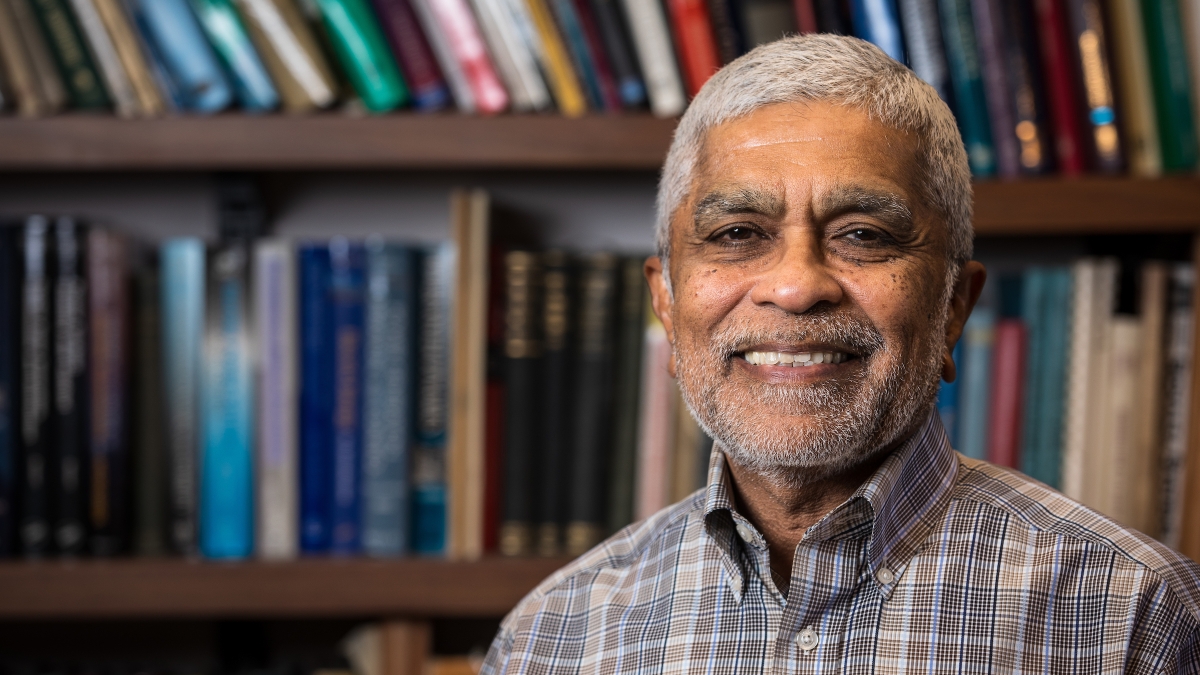Vijay Vittal was inspired to go into power grid engineering during his undergrad days at the B.M.S. College of Engineering in Bengaluru, India.
“I took this course in power system analysis,” Vittal said. “It was a senior elective. The instructor was an excellent instructor. That’s what inspired me to take this field.”
He not only took it — he mastered it. Vittal is one of the newest faculty members at Arizona State University to be named a Regents Professor. The title is the highest academic honor, awarded to scholars who have made significant contributions to their field and are recognized nationally and internationally by peers.
The Ira A. Fulton Chair Professor of Electrical Engineering and ASU Foundation Professor in electric power systems in the School of Electrical, Computer and Energy Engineering, Vittal is an expert on large-scale power grids. He works on what is arguably the premier engineering problem of our time: how to integrate renewable energy sources like solar and wind into the existing grid. It’s a wicked problem. Hospitals can’t run on wind alone. With states and companies making commitments to transition to renewable energy sources, it’s a pressing problem. California now runs on 33% renewable energy sources.
“It’s a mixture of several problems, so we have to attack it from many viewpoints,” he said. “How do you account for proper grid performance when the resource itself is variable? … The goal always is reliable electricity at an affordable price. Economics plays a very big role. You cannot keep arbitrarily increasing the cost of energy.”
Vittal has developed pioneering methods for dealing with fluctuations on the grid because of renewable energy inputs. He has developed the theory and application of “islanding” to isolate parts of the power grid to prevent a disastrous cascade of outages.
He has won every significant distinction in his field. He has been named a fellow of the Institute of Electrical and Electronics Engineers and was elected to the U.S. National Academy of Engineering, the highest honor for engineers in the United States.
In the Arizona Board of Regents citation for his Regents Professorship, one reviewer said, “He is a leading researcher in power system dynamics. … MIT’s Technology Review identified 'power grid control' as one of the '10 emerging technologies that will change your world,' and cited Dr. Vittal as one of the five leading researchers in the world in preventing power system blackouts.”
Another reviewer stated, “Dr. Vittal is without question the No. 1 scholar globally in power system dynamics and is amongst a handful of scholars that lead the broader area of power system engineering in the world.”
Of all Vittal’s accomplishments, he is most proud of the students he has trained, many of whom have gone on to prestigious positions around the country and globe.
“They have gone out and become very successful,” he said. “My first PhD student was someone older than me. He came from Korea. … He had done his undergraduate degree and due to family circumstances had to go work. He actually changed his field and worked as a construction manager in the Middle East.”
When he was financially stable, he decided to go back to school and earn a master’s degree and PhD.
“When he finished, he went back to Korea, joined this place called Korea Electrotechnology Research Institute, became the vice president, and he eventually became the chief electricity regulator for South Korea,” Vittal said. “It was very satisfying.”
Vittal also is the director of the Power System Engineering Research Center. Headquartered at ASU, the center is a program of industry and university cooperation. There are 11 other universities and 30 member companies, mostly utilities and system operators.
They deal with the delivery of energy from the generation side until close to the customer — think big overhead power lines. They work on transmission design, analysis tools, hardware, algorithms and modeling, and cybersecurity. Gary Dirks, director of ASU's LightWorks, called the team “arguably the best transmission group in the country — perhaps even in the world.”
Top photi: Regents Professor Vijay Vittal. Photo by Charlie Leight/ASU Now
More Science and technology

Indigenous geneticists build unprecedented research community at ASU
When Krystal Tsosie (Diné) was an undergraduate at Arizona State University, there were no Indigenous faculty she could look to in any science department. In 2022, after getting her PhD in genomics…

Pioneering professor of cultural evolution pens essays for leading academic journals
When Robert Boyd wrote his 1985 book “Culture and the Evolutionary Process,” cultural evolution was not considered a true scientific topic. But over the past half-century, human culture and cultural…

Lucy's lasting legacy: Donald Johanson reflects on the discovery of a lifetime
Fifty years ago, in the dusty hills of Hadar, Ethiopia, a young paleoanthropologist, Donald Johanson, discovered what would become one of the most famous fossil skeletons of our lifetime — the 3.2…
